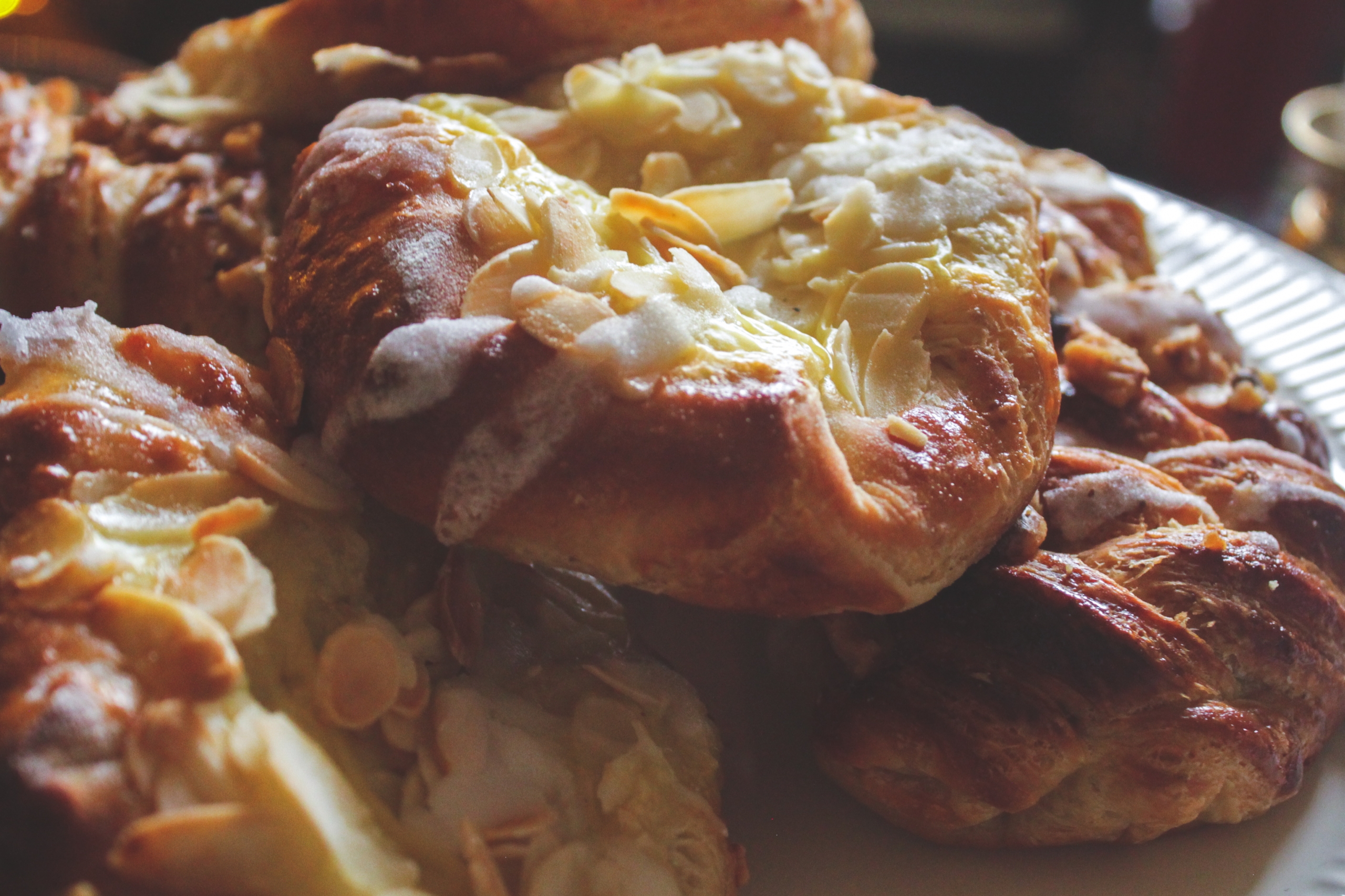From Paul Holywood
Makes 12 (recipe says 25, but sorry Paul; I like my pastries jumbo.)
Do not get it twisted. Danish is an undertaking. It’s a lifestyle. It’s also SO worth it.
Don’t try to skip ahead by skipping the hour fridge sessions. If you give your pastry 15 minutes between turns you’re going to end up with a butter sponge. Delicious, but you won’t get those defined crisp layers that you want in a danish.
Ingredients
- -500g strong white bread flour, plus extra for dusting
- 10g salt
- 80g caster sugar
- 10g instant yeast
- 2 medium eggs
- 90ml cool water
- 125ml tepid full-fat milk
- 250g chilled unsalted butter, preferably a good-quality Normandy butter
Instructions
1. Put the flours, salt, eggs and water into a large bowl and gently mix to an even dough with your fingers. Transfer the dough to a lightly floured surface and knead it for 5-10 minutes until smooth. The dough should feel a little tight at this stage. Shape the dough into a ball and put it into a plastic bag in the fridge to chill overnight, or for at least 7 hours.
2. Flatten the butter into a rectangle, about 40 x 19cm, by battering it down with your rolling pin. (You may find this easier to do this if you sandwich the butter between 2 sheets of cling film). Return to the fridge for an hour to harden the butter again.
3. Roll out your dough to a rectangle, about 60 x 20cm wide. Put the butter on the dough so it covers the bottom two-thirds. Make sure that it is positioned neatly and covers almost to the edges.
4. Lift the exposed dough at the top and fold it down over half of the butter, then fold the butter-covered bottom half of the dough up over the top. You will now have a sandwich of two layers of butter and three of dough . Pinch the edges together to seal. Put it back in a plastic bag and chill for 1 hour.
5. Take the dough out of the bag and put it on a lightly floured surface with a short end towards you. Roll out to a rectangle as before, keeping the edges as even as possible. Fold the top quarter down and the bottom quarter up so they meet neatly in the centre. Then fold the dough in half along the centre line. This is called a book turn. Chill in the bag for 1 hour.
6. Take the dough out of the bag, put it on a lightly floured surface with the short end towards you and roll into a rectangle as before. This time, fold down one-third of the dough and then fold up the bottom third to make a neat square. This is called a single turn. Chill in the bag for another hour.
7. Bring your dough out again and do a single turn as previously. Chill in the bag overnight. Your dough is now ready to use.
For Almond Danishes:
- 200g fresh ready-made custard
- 50g flaked toasted almonds
- 50g icing sugar
- 1 1/2 tsp milk
- 1/2 tsp almond extract
8. Line a baking sheet with nonstick baking paper. Roll out the pastry to a 5mm thickness and cut into 12 x 10cm squares. Place a generous tablespoon of custard into the middle, then brush the edges of pastry with beaten egg and fold the pastry corners into the centre to enclose the filling. Place the pastries on a lined baking sheet.
9. Chill, covered in cling film, for 20 minutes. Brush each pastry with the beaten egg, place a large spoon of custard in the centre, scatter with flaked almonds and bake for 15-18 minutes or until puffed up and until golden brown. Meanwhile, whisk the icing sugar, milk and almond extract together in a small bowl until it forms a thick but pourable icing and set aside. Cool the pastries for 5-10 minutes, drizzle with the icing and serve.
For Maple Pecan Danishes:
- 50g pecans
- 85g light muscovado sugar,
- 2 tbsp maple syrup
- 30g unsalted butter, softened
8. Grind 3/4 of the pecans and combine with sugar, syrup and butter.
9. To create plaits cut square or rectangle pieces of the dough. Place filling along the centre and cut strips on the diagonal either side of it. Fold the strips alternately towards the middle to create the plait. Tuck the ends under or cut them off. Repeat making pastries with rest of the dough.


